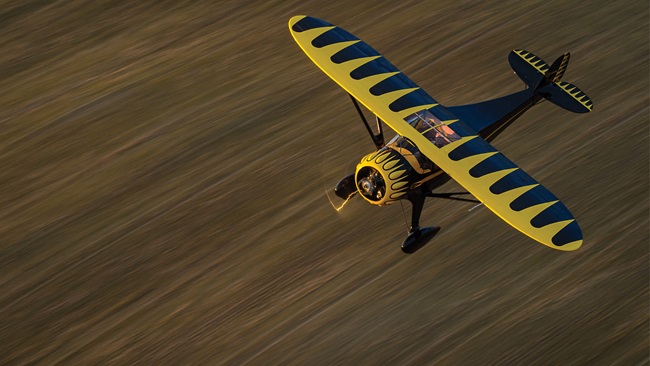Using aviation to help veterans adjust to civilian life
They are called heroes, but many veterans do not feel heroic when it comes to translating the skills they learned in training and combat to civilian life.
One Alaska veteran believes aviation can give other veterans a chance at a new life and help stem the tragic suicide rate among his peers.
These emotions may contribute to the fact that an average of 17 veterans take their lives each day, according to a recent Department of Veterans Affairs study.
VIPER is looking to change that and help alleviate the shortage of A&P technicians. A recent Boeing study suggested that about 739,000 maintenance technicians worldwide will be needed to service the world’s commercial fleet over the next 20 years.
VIPER’s purpose is to train and guarantee employment/career placement to veterans and military spouses. It assists applicants in career path decisions and coordinates placement in the program of their choice. VIPER “redefines what it means to transition,” according to the group’s website.
The organization is in the process of launching the VIPER Aviation Maintenance Program, working with the FAA, the Aircraft Mechanics Fraternal Association, the Aeronautical Repair Station Association, and other groups on its design. The program would take veterans and spouses interested in aviation maintenance, provide the necessary training and industry contacts, and support processing with potential employers.
Kaiser began his efforts to help veterans and military spouses in 2017 through partnering with the International Brotherhood of Electrical Workers and the National Electrical Contractors Association to create the Veterans Electrical Entry Program (VEEP). Since starting VEEP, the group has expanded to other construction trades and industries: ironworkers; sheet metal workers; plumber pipe fitters; mechanics; medical lab technicians; and now, aviation technicians. VIPER ensures compliance on both sides as its business partners sign contracts with applicants that specify details of employment and required training needed for any position. The VIPER applicant then attends training to gain the necessary credentials for the chosen career.
Along with the A&P program, VIPER uses aviation in other ways to help veterans deal with acute stress that is often linked to unsuccessful transitions:
- Fish to End 22 is a multifaceted program using the calming power of fishing to engage veterans about career options and a path forward. A tournament fishing team competes in events, while charter fishing partners take veterans and mentors on sponsored trips. The ”22” references a widely held statistic that 22 veterans take their lives per day (a figure since adjusted to 17 by the Department of Veterans Affairs).
- Operation Combat Pike is an innovative program that combats invasive pike in Alaska, while engaging veterans to consider and discuss career options in a comfortable atmosphere. Operation Combat Pike uses heritage military aircraft, including a Grumman Goose, on floats to access remote lakes in the state.
- Great Race to Save 22 is a planned nationwide event that aims to educate the public on the scourge of veteran suicide. The current strategy is to fly vintage Douglas DC–3 aircraft from Florida to Washington state, with stops that provide an opportunity to engage with veterans and the public on the need for the VIPER program. The organization also plans to have a Curtiss C–46 Commando serve as the lead airplane, similar to the one flown by the late U.S. Sen. Ted Stevens over the “Hump” of the Himalayas during World War II.
VIPER is not just a business idea to Kaiser, but a concept that is close to his heart: “I served as a U.S. Army Airborne Infantry Sniper in tours in Iraq and Afghanistan. During the two-and-a-half years deployed to combat with these soldiers, I was not prepared for the battle that was looming when we made it home. After valiantly serving their country, they exited the Army, like so many do, without any marketable skills. They were looking for a sense of purpose, meaningful employment, a chance to succeed. But, when my brothers in arms saw ending their lives as their only option, I felt defeated. A darkness settled over me and I knew something needed to change. My new purpose stared me in the face—to dedicate my energy to make sure this evil is stopped.”




